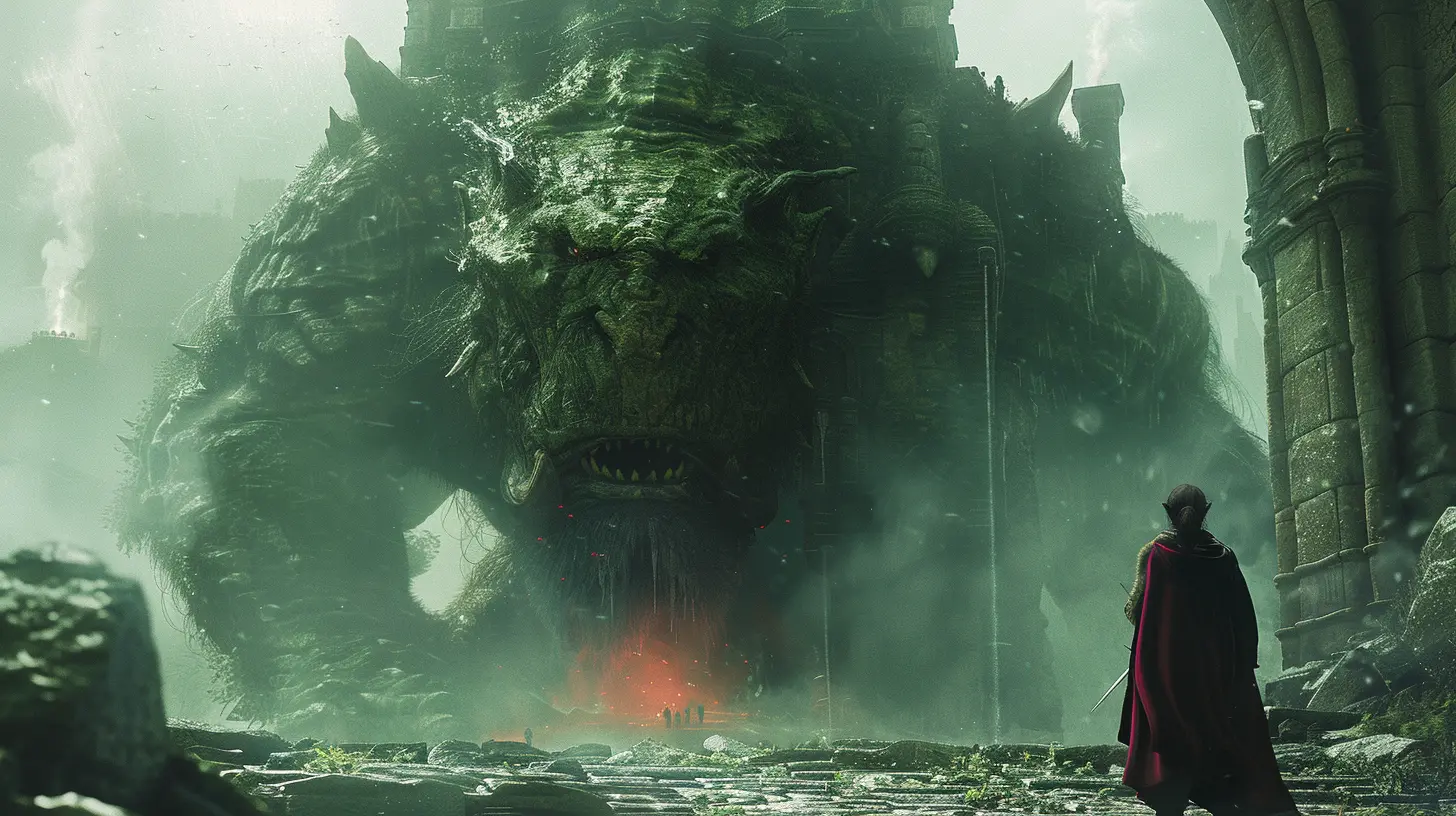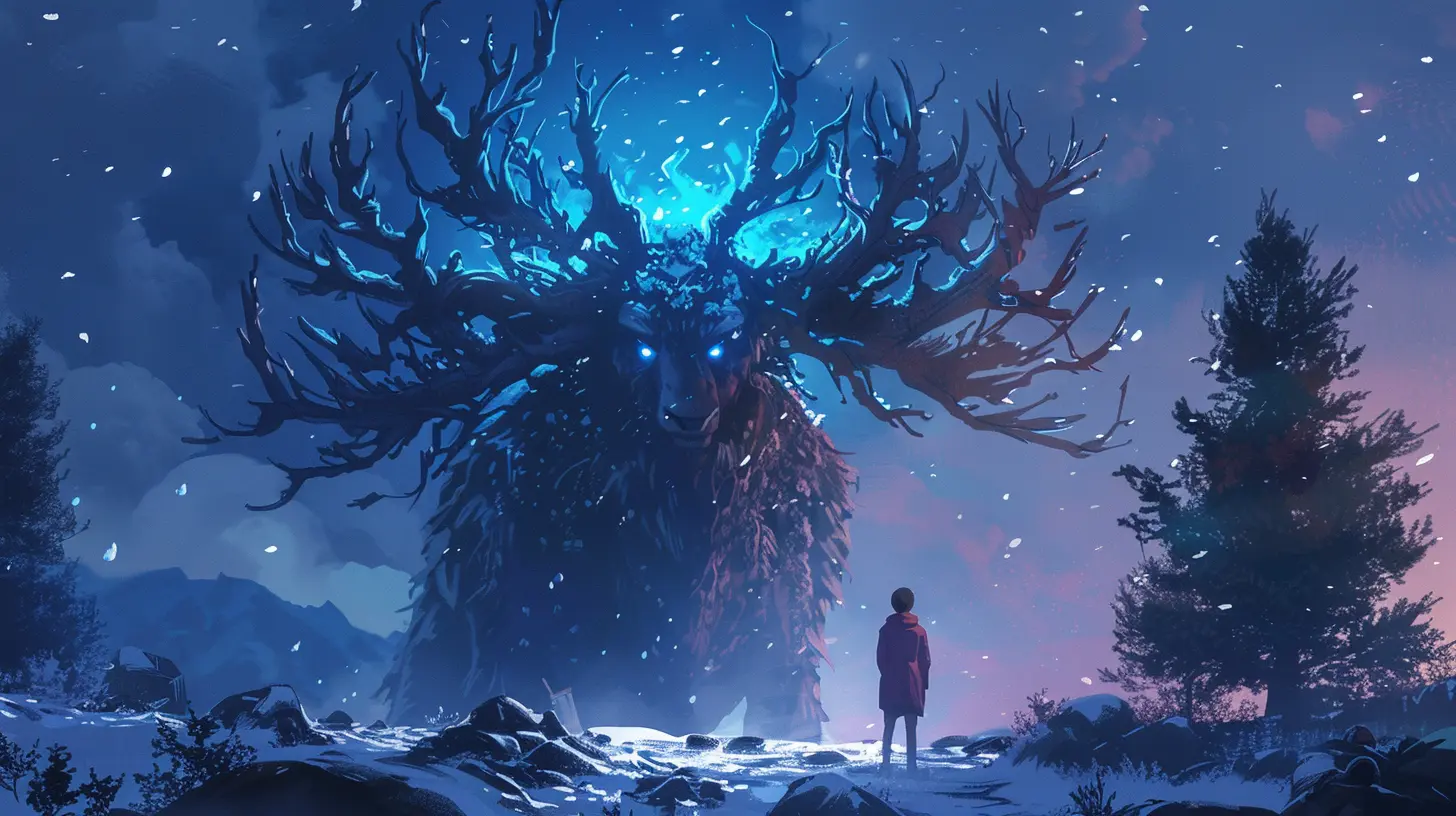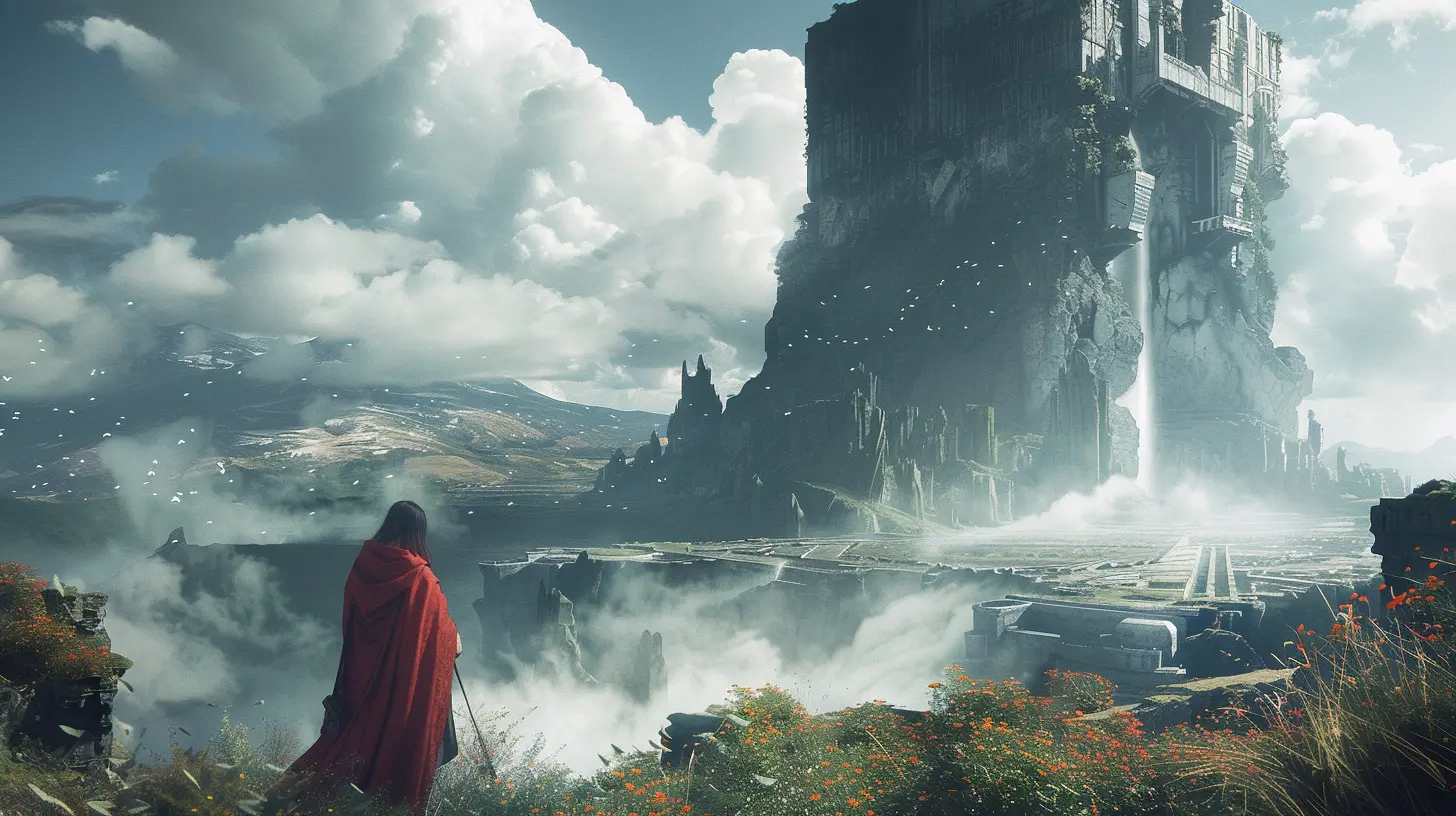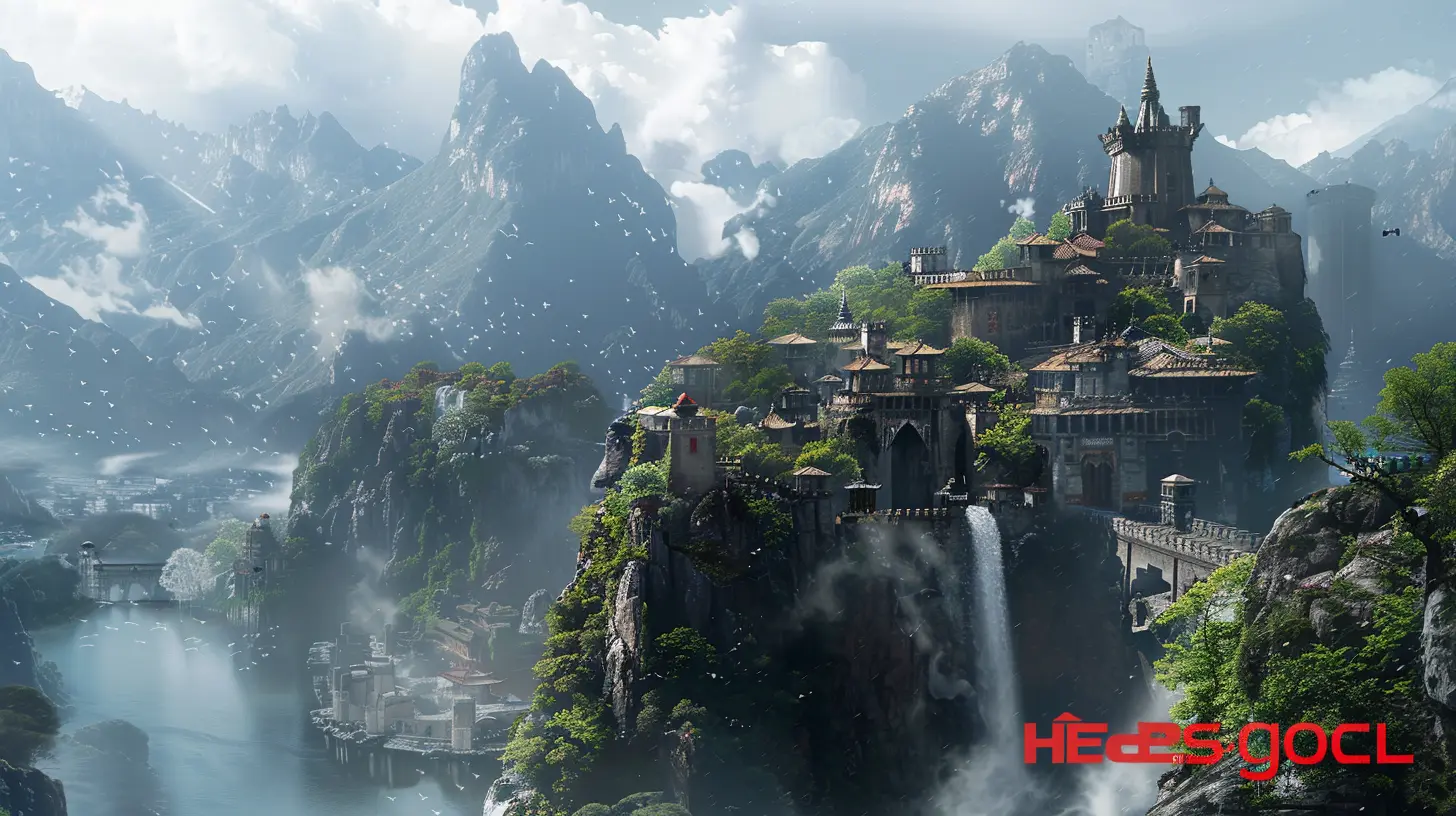The Expansion of Storytelling in Action-Adventure Games
17 October 2025
Remember when action-adventure games were all about running, gunning, and jumping through explosive scenes with little to no explanation of what was really going on? A hero with a weapon, a villain with a mustache, and that was it. The plot felt like an afterthought—just enough story to push you to the next level. But oh, how far we’ve come.
Today’s action-adventure games are like interactive novels that pull you into rich, immersive worlds with meaningful choices, emotional moments, and layered characters. Storytelling isn't just a part of the game anymore—it’s at the very heart of the experience.
In this deep dive, we’ll unpack how storytelling has evolved in action-adventure games, why it matters so much to players, and what this shift means for the future of gaming. So grab your controller (or your cup of coffee), and let’s jump into this narrative journey together.
The Old Days: When Story Took a Backseat
Let’s rewind a bit.In the early days of gaming—think 8-bit and 16-bit eras—storytelling was pretty minimal. Games didn’t have the hardware or storage to support deep narratives. You got a few lines of text (“The princess is in another castle!” ring a bell?) and off you went.
In action-adventure titles, gameplay came first. Story? That was just window dressing. You were rarely given more than a paper-thin reason to slay the dragon or raid the tomb. And honestly, that was fine at the time. Players wanted action, not introspection.
But storytelling always had potential—like a seed waiting to grow.
The Shift Begins: Cinematic Influences Take Hold
Fast forward to the early 2000s, and the shift becomes noticeable.Games like Metal Gear Solid, Prince of Persia: Sands of Time, and God of War started to blend cinematic storytelling with tight gameplay. Suddenly, you weren't just playing a game—you were part of a movie, an epic, a drama. Developers realized they could use in-game cutscenes, voice acting, and environmental storytelling to craft real narratives.
Characters had motivations. Worlds had history. Decisions started to matter. For the first time, players were emotionally invested.
And honestly, once players got a taste of that emotional connection? There was no going back.
Why We Care About Story in Games
Let’s be real—humans are wired for stories.We’ve been telling them around campfires for thousands of years. Stories help us make sense of the world, build empathy, and connect with others. So when games began to master storytelling, they tapped into something deeply human.
In action-adventure games, story elevates everything. It makes exploration feel purposeful. It turns combat into a survival tale. And it gives players a reason to care deeply about what they’re doing.
Sure, wielding a sword or solving puzzles is fun—but doing it to save a friend, protect a kingdom, or uncover a tragic past? That hits different.
Character-Driven Narratives: Heroes With Heart
One of the biggest upgrades in modern storytelling is character development.Gone are the days of nameless avatars with no backstory. Now, action-adventure games are giving us characters who feel real—flawed, complex, and deeply relatable.
Take The Last of Us. Joel and Ellie aren’t just surviving a zombie apocalypse; they’re building a fragile father-daughter bond. Their emotional journey drives the game forward and transforms every choice you make into something meaningful.
Or look at Tomb Raider's reboot. Lara Croft went from a pixelated icon to a vulnerable, determined human being. Her struggles, fears, and growth make her story compelling on a deeply personal level.
Players want to walk in the boots of someone who feels real. And when the characters are written well, the line between game and reality starts to blur—in the best possible way.
World-Building: Good Games Make Great Stories
Let’s not forget the power of a well-crafted world.Games like Red Dead Redemption 2 and Assassin’s Creed Odyssey surround players with living, breathing environments that feel like characters in their own right. You’re not just passing through—you’re living in them.
World-building in action-adventure games often involves:
- Rich historical or fantasy backdrops
- Deep lore scattered in journals, relics, or environmental clues
- NPCs with stories and personal struggles
- Dynamic weather, time cycles, and ecosystems
These elements combine to create immersion. And when you’re immersed? Every mission, every battle, every sidetrack in the world feels important because you're part of something bigger.
Choice and Consequence: The Player as Storyteller
Here’s where it gets really interesting.Modern action-adventure games increasingly let players shape the narrative. It’s not just about experiencing a story—it’s about influencing it. Your decisions impact characters, outcomes, and even the game’s ending.
Games like Detroit: Become Human or The Witcher 3: Wild Hunt rely heavily on player choice. Sometimes your decision is as small as choosing dialogue; other times, it’s as massive as sparing a life.
These moral dilemmas pull you deep into the narrative because you’re not just watching it unfold—you’re crafting it. And whether you save the village or let it burn, the consequences stick with you.
It’s like writing your own chapter in a gripping novel—only it’s all unfolding in real time.
Emotion Over Explosions: A New Type of Action
Let’s clear one thing up: Action and emotion aren’t enemies.In fact, when balanced right, they make magic. The adrenaline rush of battle scenes hits harder when the stakes are personal. The quiet moments between characters give context to the chaos.
Games like Uncharted 4 blend humor, tension, and human emotion into an action-packed adventure that feels like a rollercoaster with heart. Nathan Drake isn’t just chasing treasure—he’s grappling with love, loyalty, and identity.
And when emotion hits? It hits hard.
Ever cried at the end of a game? Thought so. That’s because modern storytelling isn’t afraid to show vulnerability, to put players in situations where the fight is not just physical—it’s emotional.
Technology: The Unsung Hero of Narrative Growth
Let’s give tech some love here.The evolution in storytelling wouldn’t be possible without advancements in graphics, animation, voice performance, and AI. Motion capture now allows actors to deliver subtle facial expressions and body language. Audio design immerses you completely. And seamless transitions between gameplay and cutscenes keep you anchored in the story.
Tech has removed the barriers between story and player. What used to take a block of text now plays out through lifelike performances and cinematic direction. It’s like stepping inside a Netflix mini-series—except you’re the lead.
Indie Games: Small Studios, Big Stories
Don’t sleep on the indie scene, either.Smaller studios have made huge storytelling strides, proving that you don’t need a AAA budget to tell a gripping tale. Games like Journey, Hollow Knight, and Celeste show how narrative can be woven through gameplay mechanics, art style, and music—even without much dialogue.
Indie developers often take bigger storytelling risks. They tackle difficult topics like grief, anxiety, and identity—things that giant publishers might shy away from. And because of this, they often leave a bigger emotional impact.
Sometimes, the smallest games tell the biggest stories.
The Future of Storytelling in Action-Adventure Games
So, where do we go from here?As tech continues to evolve, so will storytelling. We can expect:
- Deeper branching narratives and even more customized character arcs
- AI-driven NPCs that react dynamically to the player’s history
- VR games that fully immerse you in emotionally driven choices
- Cross-media storytelling that ties games to shows and books (hello, transmedia!)
And let’s not forget the rise of player-created content. Imagine stories written collaboratively between AI and gamers, or community-driven lore that evolves over time.
The lines between player and storyteller, creator and consumer, will continue to blur—and that’s a beautiful thing.
Final Thoughts: Why This Matters
At its core, storytelling in action-adventure games isn’t just about entertainment. It’s about empathy. It’s about stepping into someone else’s shoes and seeing the world through new eyes.It challenges us. It comforts us. It connects us.
And in a world that’s increasingly fragmented, the shared experience of a great story—whether it’s hunted down in a forgotten jungle temple or whispered through apocalyptic ruins—matters more than ever.
So next time you pick up a controller, remember: You’re not just playing a game. You’re living a story. And that love for narrative connection? That’s what turns a good game into an unforgettable adventure.
all images in this post were generated using AI tools
Category:
Gaming NewsAuthor:

Stephanie Abbott
Discussion
rate this article
1 comments
Faenor Porter
Exciting times for adventure storytelling ahead!
October 26, 2025 at 4:27 PM

Stephanie Abbott
Absolutely! The evolution of storytelling in action-adventure games opens up endless possibilities for immersive experiences. Exciting times indeed!


